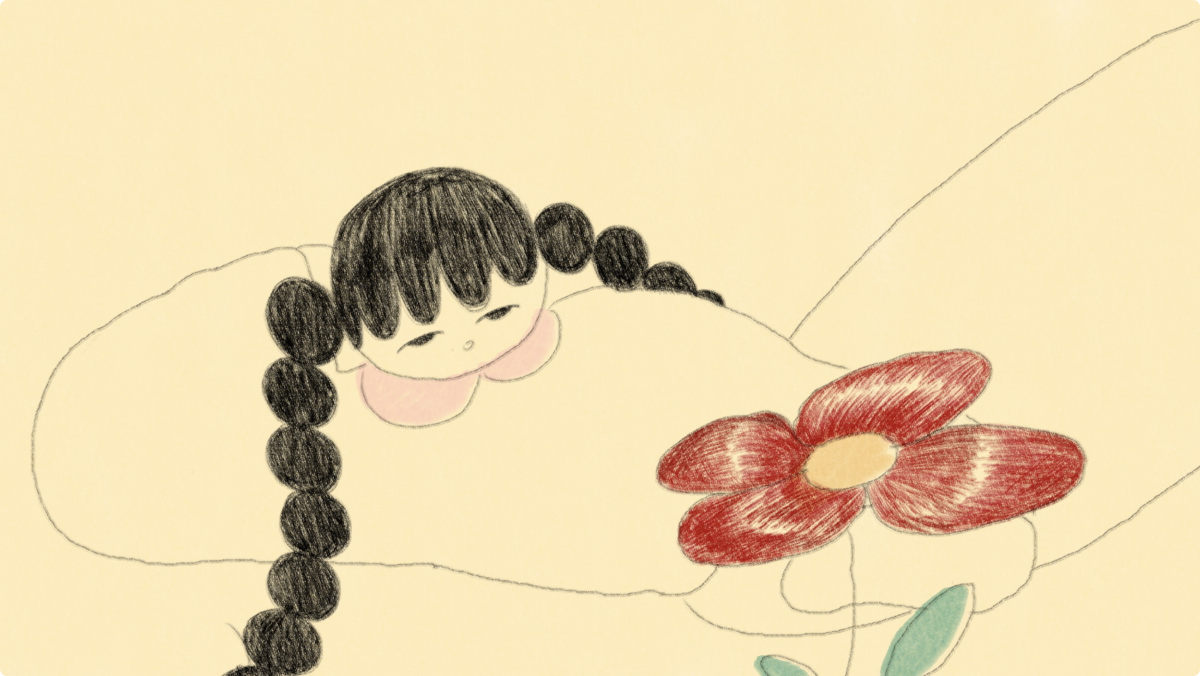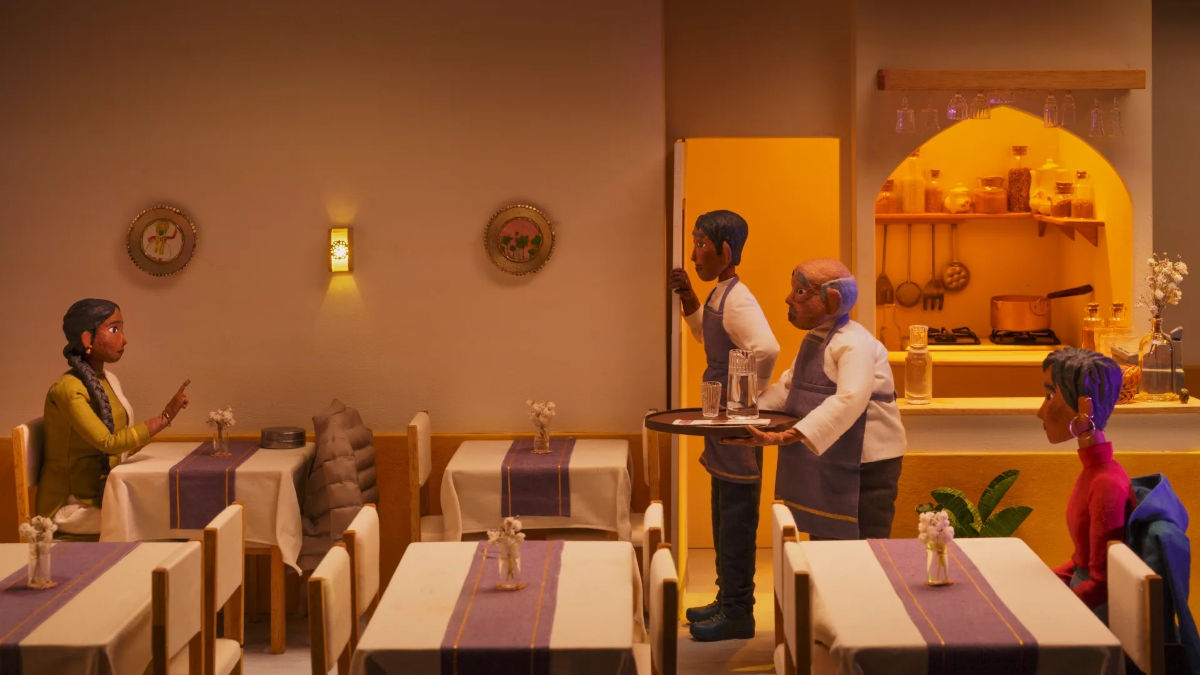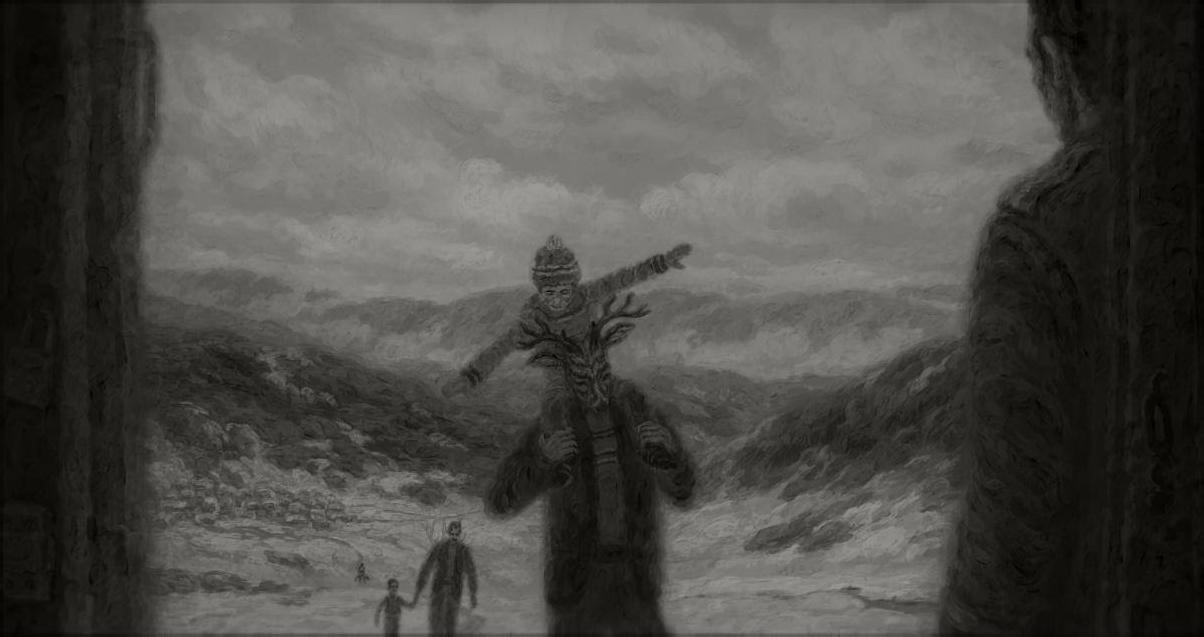Independent Animation Shorts
A Quack Too Far by Melissa Culhane

A fox settles down to sleep for the day, listening to the beautiful birdsong in the forest. However a noisy duck moves in next door and won’t shut up. What does the fox have to do to get some peace?
This is the basis behind Melissa Culhane's animation short, A Quack Too Far. Here's the film to watch, and an insider info on the film's making
Watch A Quack Too Far:
ZF: The concept is delightful. I was wondering if that came out of a personal experience or you just made that up. We all seem to have these kinds of experiences, but tell us your story.
MC: Thank you! I really like the Grimm Brother’s fairytales and I know they seem to be out of fashion these days as parents think they are too dark for the children. There’s one particular one called ‘The Cat and Mouse in Partnership’ which was part of the inspiration behind 'A Quack Too Far'. The cat charms her way into the mouses life and they live together all winter until the surprising (but also inevitable!) conclusion when the cat eats the mouse. The final line is, "well what did you expect, it’s a cat!" I wanted my story to have a similar message, that some creatures are just not suitable to hang out with, or you’ll get eaten. I am big into seeing the best in everyone and being open-hearted but when you are a mouse or a duck, maybe put a limit on your compassion - if your friend is a bully, it's ok not to be friends with them.
ZF: Comedy needs very precise timing. Did you actually think through all your situations with script, storyboards etc.?
MC: I've been thinking a lot about the idea of working out everything in advance. For a Quack Too Far, I had a very minimal script and storyboard. I work best when I’m in the middle of the thing - so I felt into the timing of it as I was animating. The animation style was very simple and I was working on my own so it allowed for this approach. I’m good at the big beats but then it took a lot to get my head around the small connecting details - how everything links together, and how the character ends up here when he was there. I was more in a picture book mode to start with so that was an interesting learning curve.
For the animation that I'm currently working on, instead of the minimal storyboard, I did it the "right" way - and worked up every scene in detail. I'm still working on my own so I'm not sure I needed to lock myself in so tightly from the start. Most people seem to respond well to having everything mapped out and taking a linear approach, but I'm not convinced that it's the best way for me personally. It feels a bit too tight of a box to work in, like there's not enough breathing space. Maybe it's because all the fun decisions are already made and I'm just left with the hard slog. So that's something I'm trying to figure out a balance with.
I did a portrait course with the artist Sharon Brindle and she said, "the not-knowingness is a powerful place to be in" and I really agree. It's not a comfortable space but it can bring you deeper. I think that's why I like to work more intuitively as it means the conversation is constantly in motion between me and the work, the technique and the creation. So for me, having all the important decisions made in advance of making the actual piece, isn't the best approach. I think it's also partially to do with the fact that when I'm planning in advance, there's an element of the abstract to it which I can't fully connect to, whereas when I'm seeing the changes happening in front of me I can understand it better.
I think when you are working on your own you need a lightness, a bounciness, as you have to generate your own momentum. When you are in a big production the machine is moving by itself and you just need to link in with it and keep up. But making work completely on your own makes you both the taskmaster and the servant, so there's a whole unique set of challenges there. I am learning to allow myself to design my own rules, even if they seem unconventional to the outside world. I watched a few interviews with Mariusz Wilczynski talking about how he made Kill it and Leave this Town and it gave me strength when I was losing courage. He is very unique in his approach and that translates directly into the work. He purposefully made his own rules and followed his instincts. That film couldn't have been made any other way or it would have been a different film.
ZF: I liked the fact that the fox only uses its own force in the end, trying to rationally solve the situation beforehand. Was it part of the plot as well?
I feel like the fox was only showing patience so that he had a fresh duck in his backyard but maybe I’m just being cynical. That fox is so mean! He could easily have used brute force immediately but I guess he wasn’t hungry enough. I know that foxes in the wild don’t eat the neighbouring mice and rabbits until the weather gets bad and they are forced to stay near home. Some audiences think he was very patient to last that long but personally, I think it was calculated.
ZF: Is the whole film digital animation?
MC: Yes! It's completely digital. I was quite inexperienced in animation when I made this so I knew I had keep it simple. I designed it around my own personal strengths and limitations. I was already good at Illustrator and Photoshop (I teach digital illustration) so the production and character design came easy. There was a drawing I made a few years earlier (for a book called Naturama) of a fox asleep in a beautiful forest. This was my jumping off point for both the story and for the location design. I developed the forest backdrop in Illustrator. The characters were drawn in Photoshop so that I could take advantage of the brushes, which would introduce some texture against the flat background. I animated in After Effects. I used a Duik rig for the fox and a basic frame replacement technique for the duck. The drawing bit was easy but I really had to pull together all my strength to figure out how to make things move the way I wanted them to. Finally, I did the basic compositing in Premiere Pro.

ZF: How did you figure out the sound design? Obviously, sounds are very important in the film -they carry a big narrative burden.
MC: I made the decision early on to have no dialogue to be accessible to children worldwide without subtitles. I am also a fan of Pingu! The sound design itself came together in the final stages. I had an idea of what I wanted then it was a case of jumping in and using my voice to make funny sounds. I pressed play on the animation and watched it as I improvised sounds over it until it felt right. I recorded it on my iphone and brought it in straight. I know it's not perfect but I really like the immediacy of the sounds and I wanted something energetic. The birdsong track was lain underneath everything so that smoothed out the cracks.
ZF: I understand this is a student film. Tell us how the production started, your schedule and people who helped you. What was the biggest challenge here, deadlines or artistic work or both?
MC: I worked for a good few years in design, particularly focused on illustration, so it's only recently that I've been making animation. I did a one year course, a certificate in animation, before signing up for a one year 'top-up' degree in animation in Coláiste Dhúlaigh College of Further Education in Dublin. This was when I made A Quack Too Far. I was thrown in at the deep end but it was a really nurturing environment. My teachers were really encouraging and believed in me, which helped! I hadn’t really planned on spending another year in college but sometimes things happen in my life where my next move is so clear that it feels impossible to take any other path. It's as if everything else fades away and only one option is glowing in front of me, and this was one of those times.
When I started college, I jumped straight into the scriptwriting. I wrote the main beats of the story on the first day. I already knew I wanted a forest and a fox then the rest of the story came together quickly during a writing exercise. I worked out a very basic animatic during the first semester. A couple of days after I made my pre-production presentation, I got married (and changed my surname from Doran to Culhane). So it was quite a busy time! January until May was the designated production time. I got really stuck for a few weeks, then overwhelmed. So overcoming the stuck-ness was by far the biggest challenge of the film. But something finally clicked and I was able to power up and get it done in time for my final presentation. I would say the deadline ultimately helped me even though it seemed impossible at one point. The following month it got accepted into the Galway Film Fleadh for its premiere which was the perfect launchpad to the world.
ZF: Does life in the forest/nature attract you personally? Or the film is only a reminder that even nature has its own rules that might be broken?
MC: I love being out in nature. I recently moved to Donegal in the northwest of Ireland which is famous for its stunning mountainous landscapes and beautiful beaches, so now I am even more connected to nature. I illustrated a book called Naturama, which is all about Irish wildlife and I do loads of nature art workshops with kids. When I was small I kept nature journals and knew all the names of all the birds and their songs. There is so much to learn, on all levels, through studying nature. Whatever your age it can help you make sense of your place in the world and helps you understand so much. At the moment I’m making a short animation called Keep Going, Little Snail. I keep going back to the idea of how each creature and plant has adapted a different pace of life for themselves, whilst perfectly fitting into the overall pace of the eco system around them. There’s a famous Lao Tzu quote - “Nature does not hurry, yet everything is accomplished.” I'm trying to accept my slow pace of creation at the moment and absorb the lessons that my main character, the patient and resilient snail, is teaching me.
ZF: Are you happy continuing with animation shorts directing or perhaps you would like to get aboard on a big animation project as an animation professional? The animation scene in Ireland is very vibrant.
MC: There are so many great productions coming out of Ireland, so working with an established company would be an exciting possibility. I'm trying to design a life for myself where I can be creative, give attention to my loved ones, as well as generate enough income to live well. I am currently animating Keep Going, Little Snail so that's my focus for the present moment. There is so many things I want to do next... I don't know what my next move will be but am sure that when the time comes, my next direction will be glowing in front of me and all will be clear.

Film Review (Vassilis Kroustallis)
Three times is the lucky (or unlucky) number in Melissa Culhane's definitely relatable A Quack Too Far, which manages to get its message across from the first frame -or quack. Drawn as to be an innocent nature adventure, and heard as if a noise is about to enter your eardrum, the comedy short is effectively calculated and executed. Poor (?) duck.
About Melissa Culhane
Melissa Culhane (formerly Doran) is an Irish illustrator and animator. She illustrated the best selling wildlife books Naturama and My Naturama Nature Journal. She has a degrees in animation, architecture, and a masters in digital media technology. A Quack Too Far, her graduate short, was released in 2019. Keep Going, Little Snail is her first professional short animation and is funded by the Arts Council of Ireland, Donegal County Council, Creative Ireland, and Westmeath County Council.









